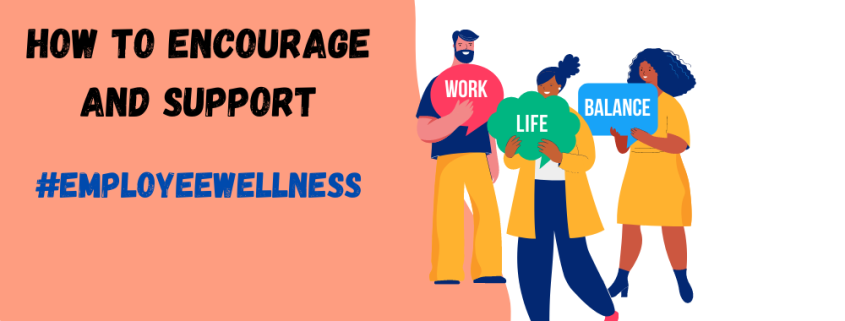Tips To Maintain Employee Wellness While Minimizing Turnover
A healthy company culture that promotes employee satisfaction in a remote environment will positively affect company morale and your bottom line. When employees feel supported by a positive work environment that includes transparency, communication, support networks, and work-life balance, productivity increases while turnover rates decrease. Read on for tips to maintain employee wellness by prioritizing employee well-being in your business.
Set Clear Expectations
The onboarding process is foundational to an employee’s experience. To avoid confusion and provide an inviting and structured experience, set expectations early and continue to hold employees to those standards throughout your engagement. When team members clearly understand expectations, there is less room for frustration and confusion.
Expert Tip: Be reasonable. Company expectations and policies should be realistic. Burnout is often the source of employee dissatisfaction. To avoid this, revise company expectations by balancing company needs with employee needs.
Company Policies
Company policies set the standard for everyone to meet. When provided with current policy documentation, employees can easily reference this information. Company leadership can be transparent by providing employees with organization charts, schedules, colleague availability, and contact lists.
Examples of company policies to clarify:
- Time-off requests and how to get job coverage
- Human resource or escalation processes
- Internal and external privacy policies
- Performance and compensation review processes
Specify Individual Job Standards
New employees may struggle to advocate for themselves when overloaded with tasks. Setting role expectations early in the onboarding process will help to avoid employee burnout, increase communication between management and staff, and improve company morale. Seasoned staff members can also feel the brunt of over-allocation by picking up the slack for others. The less an employee feels overworked, the more satisfied they will be.
Help employees anticipate a day-to-day standard:
- Written job expectations for each position at the company
- File sharing processes
- Client communication standards
- Expected turnaround rate on deliverables
- Work schedule or expected number of working hours per week
Provide Support Networks
The benefits of employee engagement are immense – employees actively involved in their work and the team surrounding them often lead to higher productivity and lower turnover. However, employee engagement can be challenging for new and remote employees. Upon hire, clarify who employees should contact with questions and concerns, and consider a company kick-off call to welcome the new hires, including the team members they will have direct contact with. Employees will feel supported and confident in their decision-making by identifying who they can turn to when they feel confused, frustrated, or eager to share a personal or professional win.
Here are some positions to highlight as part of an employee’s support network:
- Human resource managers
- Project managers
- Mentors
- Direct managers
- Direct reports
- Employees who share the same role
Offer Outside Resources To Encourage Employee Wellness
Regardless of the work model, maintaining a healthy work-life balance is important for many people engaging in the workforce. Positions where employees are equipped with benefits to support their mental health, financial stability, and overall wellness reign supreme. As an employer, you can provide training, resources, and assistance programs that help employees succeed outside working hours. Additionally, prioritizing employee wellness will aid your team in feeling valued and supported in their long-term goals.
Some examples of wellness initiatives and benefits include:
- Financial well-being resources (such as tuition assistance or classes on tax preparation or calculating your debt-to-income ratio for more significant investments like buying a home)
- Retirement investment
- Employee wellness programs that encourage team members to maintain a healthy lifestyle (such as health coaching, classes that promote healthy eating, and reimbursement incentives for gym memberships)
- Employee health insurance to cover healthcare costs
- Employee assistance programs that prioritize mental health (such as counseling or therapy coordination)
- Flexible work hours, floating holidays, or a generous paid time-off allowance
- Employee rewards initiatives (such as standing discounts with retail clients or a point-based rewards program based on employee accomplishments)
Check-In Frequently
Just as new employees want to feel important and part of the team, remote workers may feel isolated outside of an office setting. Scheduling frequent check-ins can create an open dialogue to ensure they feel involved. Weekly onboarding check-ins secure time to get to know your new employee. During this time, you can build rapport with your team by discussing current projects, upcoming tasks, and any other notable items they want to share.
Scheduling regular meetings and increasing communication outside client meetings will cultivate an engaging workplace for remote employees. Messaging apps like Microsoft Teams and Slack enable and encourage team communication and efficiency while promoting a work environment built on collaboration.
Consider monthly and quarterly employee check-ins to maintain workplace wellness and engagement. During these conversations, employees have the opportunity to express questions or concerns. Employees may also use this time to give their managers feedback, fostering transparent communication.
Set Actionable Goals
Investing in employee capabilities benefits and individual workers will ultimately benefit the company. Remote employees that seek connections within the company want to feel they are on a secure path that leads to growth and advancement in their fields. Discussions about long-term opportunities and skill development can encourage and motivate employees to meet professional and personal goals. Set aside separate meetings to discuss their career goals and set up a plan and timeline on how they can achieve them. During these meetings, be honest and upfront about what skills they are exceeding and where they need to focus on improving. Setting goals to achieve daily, weekly, and monthly will help structure and organize employees’ career paths.
Examples that may appear in a career growth plan:
- Training sessions to grow or maintain a specific complex skill (such as graphic design or social media marketing)
- Training sessions to develop a soft skill (such as critical thinking or time management)
- Internal mentorship programs
- Obtaining specialized certifications
- Earning a higher-education degree relevant to your company’s industry
- Setting aside time each week to research industry trends
- Representing your company at industry seminars or events
A Healthy Work Environment Reduces Turnover
The remote workforce has changed how employees work, interact, and their daily schedules. By keeping communication lines open and creating a positive work-life balance that provides value to your teams, you’ll create an environment that motivates and encourages employee wellness while minimizing turnover.









